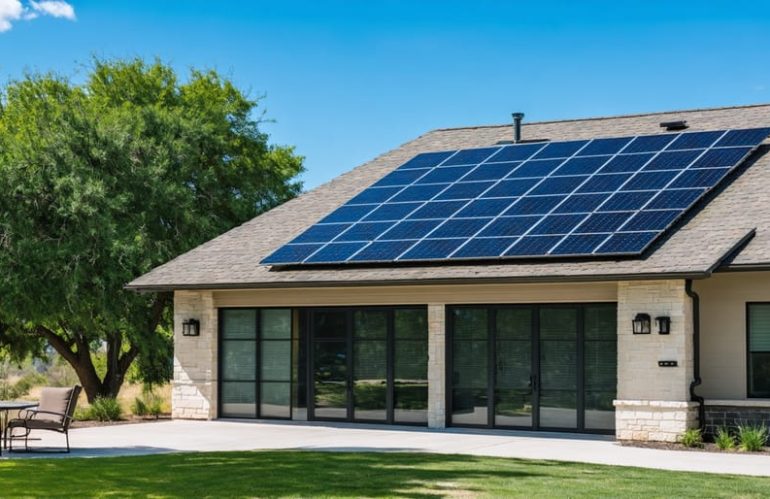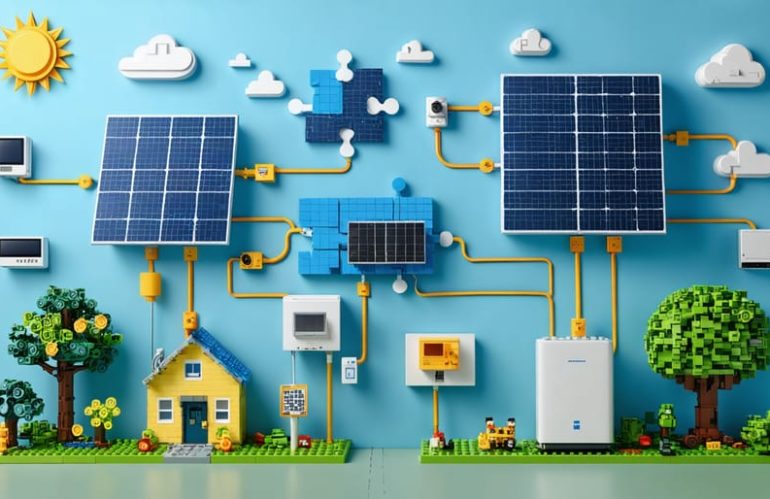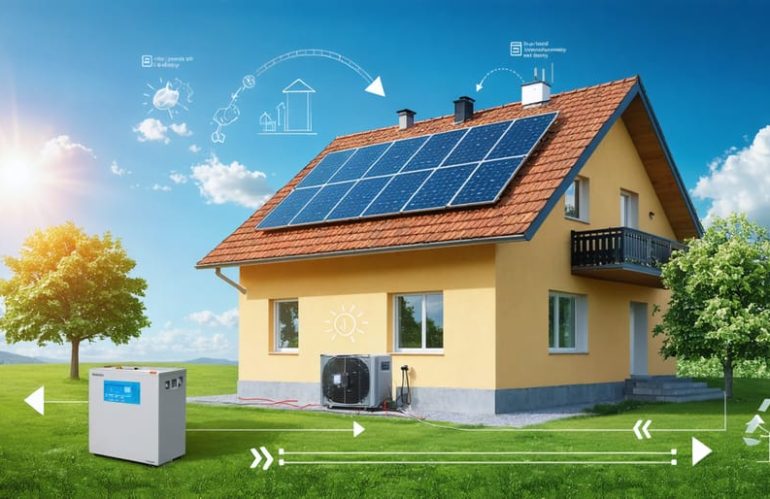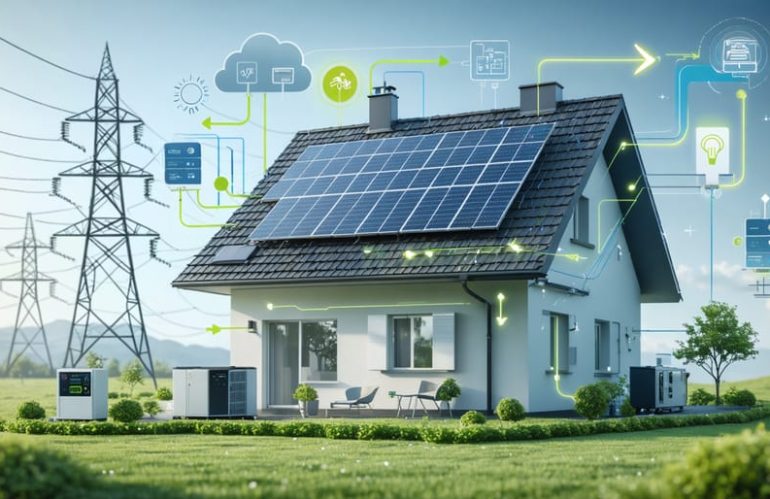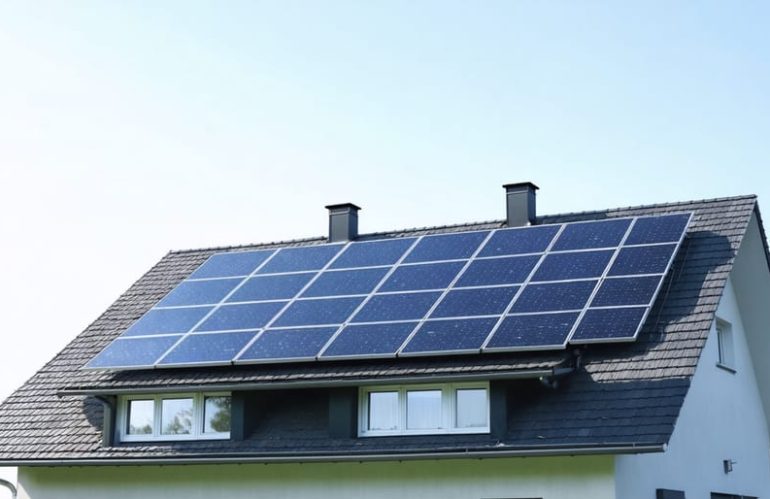Imagine a future where your entire neighborhood powers itself through shared solar panels, creating a resilient, sustainable, and cost-effective energy ecosystem. This vision is already becoming reality through solar energy communities – collaborative initiatives that transform how we generate, share, and consume clean electricity.
Solar energy communities represent a groundbreaking shift in renewable power adoption, moving beyond individual rooftop installations to create interconnected networks of solar infrastructure that benefit entire neighborhoods. By pooling resources and sharing generated power, these communities are …
Author: richard
Texas Solar Panel Tax Credit: Save Thousands on Your Home Installation
Texas homeowners can slash their solar installation costs by up to 30% through the federal solar Investment Tax Credit (ITC), while unlocking additional local incentives unique to the Lone Star State. Beyond the federal credit, Texas residents benefit from property tax exemptions on their solar installations and utility-specific rebate programs that can reduce initial costs by thousands. Smart timing of your solar investment in 2024 maximizes these incentives, as federal rates will decrease in coming years.
San Antonio, Austin, and Dallas residents enjoy particularly generous municipal solar incentives, with some programs offering …
Offshore Wind Power: A Game-Changing Path to Energy Independence
Offshore wind energy stands at the forefront of our clean energy revolution, promising to deliver true energy independence while transforming our coastal regions into renewable powerhouses. With turbines capable of generating enough electricity to power millions of homes, offshore wind farms harness the ocean’s consistent, powerful breezes to produce clean energy at an unprecedented scale.
Unlike their land-based counterparts, offshore wind turbines benefit from stronger, more reliable winds and…
Double-Sided Solar Panels Behind Windows: Your Home’s Hidden Energy Goldmine
Transform your living space into a solar-powered sanctuary without traditional rooftop installation. Recent solar technology advancements have made window-mounted solar panels an increasingly viable option for urban homeowners and apartment dwellers. These innovative solutions capture sunlight through your existing windows, converting otherwise wasted energy into usable electricity while maintaining your home’s aesthetic appeal.
Imagine powering your devices using the …
Why Energy Storage Standards Matter for Your Home Solar System
Interoperability standards are revolutionizing home energy storage, making it easier than ever for homeowners to maximize their solar investments. Just as your smartphone seamlessly connects with various devices, modern energy storage systems are evolving to work harmoniously across different brands and technologies. This standardization means your battery storage system can communicate effectively with your solar panels, smart home devices, and the power grid – regardless of manufacturer.
For homeowners investing in solar energy, these standards offer crucial protection against obsolescence and vendor lock-in. They ensure …
Solar Battery Storage: How Your Home Can Capture and Keep Free Energy
Solar battery storage systems represent the missing link in achieving true energy independence with renewable power. By capturing excess electricity generated during sunny days, these intelligent storage solutions enable homeowners to maximize solar panel investment and break free from grid dependence. Think of it as having your personal power bank – when the sun sets or during cloudy weather, your stored solar energy seamlessly powers your home, eliminating the need to draw …
Solar Farms: The Smart Way to Power Your Agricultural Future
Solar farms transform vast stretches of land into clean energy powerhouses, generating electricity that powers thousands of homes and businesses while reducing our dependence on fossil fuels. These large-scale solar installations serve as renewable energy hubs, utilizing arrays of photovoltaic panels to capture sunlight and convert it into usable electricity that feeds directly into the power grid.
Beyond their primary role in energy generation, solar farms represent a crucial stepping stone toward a sustainable future. They create local jobs, provide steady income for landowners through lease agreements, and offer communities a …
How Microgrid Interconnect Devices Make Your Home Solar System Smarter and More Reliable
Transform your home’s energy independence with a microgrid interconnect device – the intelligent bridge between your solar power system and the traditional electrical grid. This innovative technology acts as your home’s energy traffic controller, seamlessly managing power flow between your solar panels, battery storage, and utility connection while providing critical backup power during outages. Unlike standard solar inverters, these sophisticated devices enable your home to operate as a self-sufficient power island when needed, while still maintaining the security of grid connection. By automatically optimizing power …
Solar Panel Size Matters: How Dimensions Impact Your Home’s Energy Health
Residential solar panels have transformed from a niche eco-friendly choice to a mainstream energy solution, with dimensions playing a crucial role in their effectiveness and installation success. Today’s standard residential solar panels typically measure between 65 to 71 inches long and 39 to 41 inches wide, dimensions carefully engineered to balance power generation with practical rooftop installation requirements. These measurements aren’t just numbers – they represent the sweet spot between maximum sun exposure and structural feasibility for most American homes.
Understanding solar panel dimensions is essential for…
Zero-Energy Homes: Smart Monitoring Puts Money Back in Your Pocket
Zero-energy homes represent the future of sustainable living, offering a revolutionary approach to residential construction that produces as much energy as it consumes over the course of a year. These cutting-edge dwellings combine advanced architectural design, state-of-the-art renewable energy systems, and superior insulation techniques to achieve net-zero energy consumption while maintaining modern comfort standards.
As energy costs continue to rise and environmental concerns take center stage, zero-energy houses have emerged as a practical solution that benefits both homeowners and the planet. By incorporating solar panels, …


